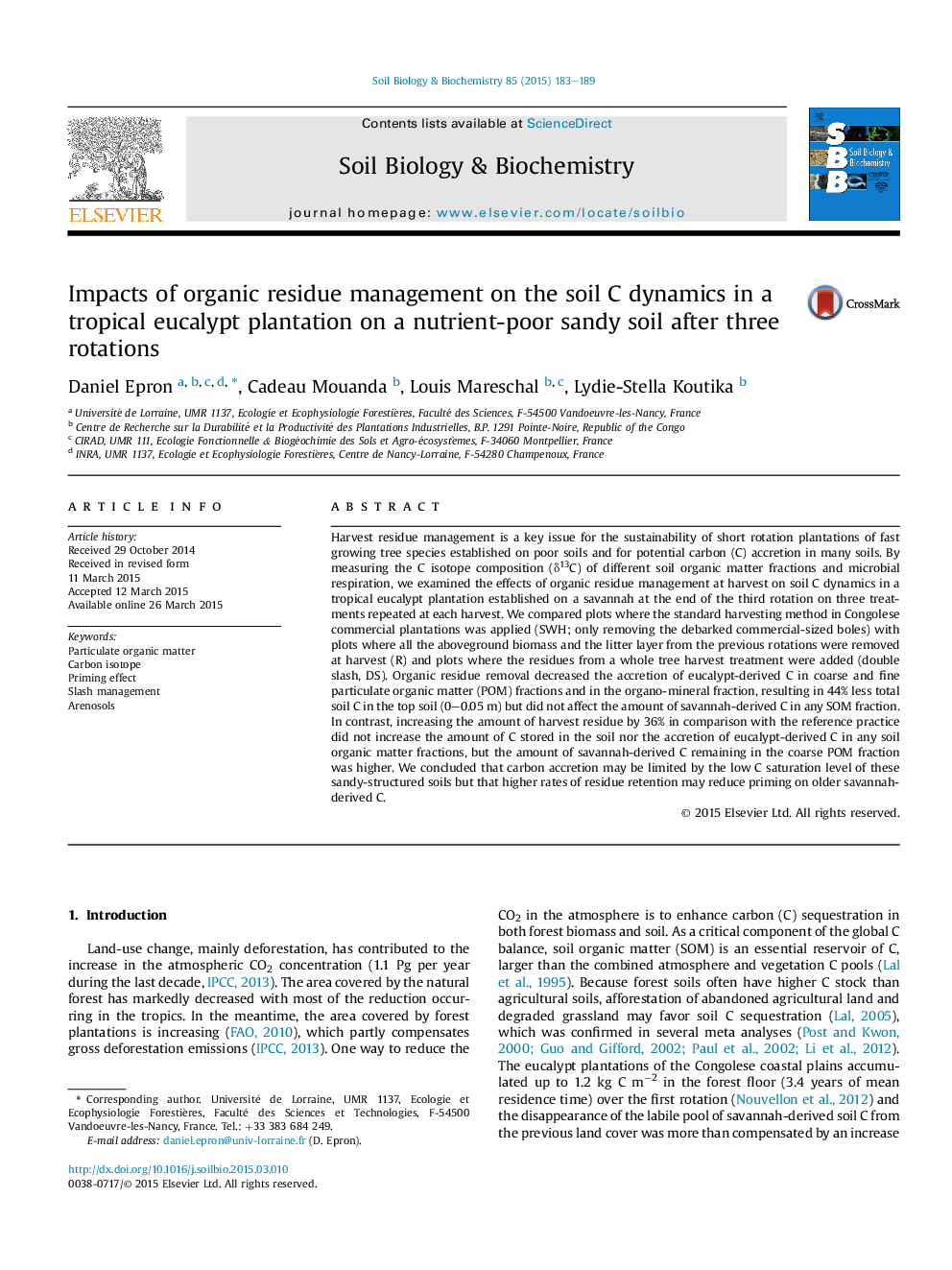| Article ID | Journal | Published Year | Pages | File Type |
|---|---|---|---|---|
| 8364223 | Soil Biology and Biochemistry | 2015 | 7 Pages |
Abstract
Harvest residue management is a key issue for the sustainability of short rotation plantations of fast growing tree species established on poor soils and for potential carbon (C) accretion in many soils. By measuring the C isotope composition (δ13C) of different soil organic matter fractions and microbial respiration, we examined the effects of organic residue management at harvest on soil C dynamics in a tropical eucalypt plantation established on a savannah at the end of the third rotation on three treatments repeated at each harvest. We compared plots where the standard harvesting method in Congolese commercial plantations was applied (SWH; only removing the debarked commercial-sized boles) with plots where all the aboveground biomass and the litter layer from the previous rotations were removed at harvest (R) and plots where the residues from a whole tree harvest treatment were added (double slash, DS). Organic residue removal decreased the accretion of eucalypt-derived C in coarse and fine particulate organic matter (POM) fractions and in the organo-mineral fraction, resulting in 44% less total soil C in the top soil (0-0.05 m) but did not affect the amount of savannah-derived C in any SOM fraction. In contrast, increasing the amount of harvest residue by 36% in comparison with the reference practice did not increase the amount of C stored in the soil nor the accretion of eucalypt-derived C in any soil organic matter fractions, but the amount of savannah-derived C remaining in the coarse POM fraction was higher. We concluded that carbon accretion may be limited by the low C saturation level of these sandy-structured soils but that higher rates of residue retention may reduce priming on older savannah-derived C.
Related Topics
Life Sciences
Agricultural and Biological Sciences
Soil Science
Authors
Daniel Epron, Cadeau Mouanda, Louis Mareschal, Lydie-Stella Koutika,
